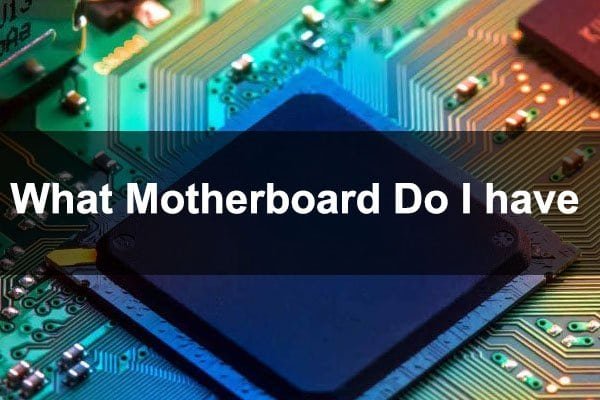Checking the requirements was not a complex procedure in the early days, but it was something that everyone, including myself, used to perform on the go. Yes, examining specs is a great method to learn all there is to know about your components, and it’s something that everyone does. Figuring out “What motherboard do I have” is a bit difficult and, in most cases, requires a CMD specialization.
But don’t be concerned! So be ready because I’m going to make the process simpler for you!
For use with Windows (7 and 10)
The first technique is the simplest and should take you the least amount of time.
Method 1: Make use of system data
Simply enter msinfo32.exe into the run dialog box to get started. Simply click on “Put here to search” (unique to Windows 10) and type in “RUN” to launch the run dialog box. Simply type “msinfo32.exe” into the dialog box that appears, and you’re ready to go. Once you’ve finished with it, go to the “System Summary” page and search for “System Model” in the list. It’s as simple as that.
Using Command Prompt (Method 2)
The CMD itself may be used as an alternative to the first approach. In addition, the CMD commands are a bit more difficult to use. This technique is primarily for people who use command prompt on a regular basis. This isn’t to say that newcomers won’t be able to utilize it. As a result, just follow the procedures outlined below and you’ll be set to go.
- In the search bar, type CMD (Both for windows 10 and 7)
- Type “wmic baseboard get product,Manufacturer” into the command prompt when it appears. Copy this command to your clipboard and paste it into the command prompt with a right-click.
- Press the Enter key.
- That’s the name of your motherboard, and that’s all there is to it. Wasn’t it straightforward?
Method 3: Analyze your computer
I’m simply joking around! There’s no need to be concerned since your computer isn’t likely to die anytime soon. By “postmortem,” I mean that you should remove your computer casing and look for the motherboard’s name. We don’t generally suggest this technique since it may create a slew of problems, particularly if you aren’t a professional. Yes, you may end up ripping the motherboard’s cables or microchips apart.
So, only attempt this if you are confident in your abilities. You may see the following brands on the motherboard:
- MSI
- Gigabyte
- ASUS
- Biostar
- ASRock
- HP
- EVGA
If any of these labels appear on your motherboard, you’re in excellent shape. If not, you most likely purchased a 3rd-class motherboard with a poor durability ratio. No, I’m not trying to smear the reputations of local contestants, but it is what it is.
Also, if you can’t locate the model after searching up the brand, don’t panic. All you need to do is keep an eye out for the four-digit code. It’ll turn up someplace. Take, for example, the MSI X570. The model is known as the X570.
Using third-party software (method 4)
You may check out the exact specs of your motherboard using one of three software programs that you can obtain from the internet. I understand that it adds to your hard drive’s load, but they’re just around 50 MBs in all.
CPU-Z is number one.
CPU-Z is a popular third-party program that is freeware, which means you don’t have to pay for it. You just need to download it off the internet and you’re ready to go. Install it, and the program will automatically identify the requirements. It’s available for download here!
2. Speculative
Speccy is what I use for my gaming setup since it provides comprehensive specs of the components as well as the current temperature. For example, you may use this program to keep track of CPU, CPU, RAM, hard drives, and other temperature anomalies. However, you’ll need to get the premium edition of the program to find out “What motherboard do I have in my computer.” So, here’s where you can get it!
3. Belarc Consultant
This is the final freebie you may use to learn about your motherboard’s specs. And I think that these techniques are more than plenty for a person to concentrate on since it is improbable that you are still unable to determine the specifications of your MOBO. In terms of software, it includes all kinds of information, such as the slots utilized, system RAM, and local storage. Also, the motherboard’s name will be included under the heading “Main Circuit Board,” so keep an eye out for that! Here’s where you can get the program!
What motherboard (Linux) do I have?
If you’re a Linux user, you won’t have to worry about not being able to figure out what your motherboard’s core specifications are.
Enter the command “Ctrl + Alt + T” to open the Linux terminal. After that, type “sudo dmidecode -t 2” and press enter.
The prompt will then begin looking for the product name, manufacturer, version, and serial number on your behalf.
Last but not least,
That’s all there is to it, folks! I mean, there was no need to make the post longer since the techniques are so basic and easy to find. Apart from that, feel free to contact us if you have any queries about the general specs of your motherboard. Before I go, I’d want to point out that the whole procedure is worthwhile since you learn a lot about your components, including the motherboard. So, my advice is to maintain practicing these techniques since they may assist you diagnose your system in the event of an emergency. Have fun gaming!
{“@context”:”https://schema.org”,”@type”:”FAQPage”,”mainEntity”:[{“@type”:”Question”,”name”:”How do I find out what motherboard I have Linux?”,”acceptedAnswer”:{“@type”:”Answer”,”text”:”
You can use the lspci command to find out what your motherboard is.”}},{“@type”:”Question”,”name”:”How do I find out my motherboard type?”,”acceptedAnswer”:{“@type”:”Answer”,”text”:”
This is a difficult question to answer because there are so many different motherboard types. However, the simplest way to find out what type of motherboard you have is to go into your computers settings and look for something like Motherboard or System Information.”}},{“@type”:”Question”,”name”:”Can Linux run on any motherboard?”,”acceptedAnswer”:{“@type”:”Answer”,”text”:”
Yes, it is possible to run Linux on any motherboard. However, the performance will vary depending on the hardware and software that is installed.”}}]}
Frequently Asked Questions
How do I find out what motherboard I have Linux?
You can use the lspci command to find out what your motherboard is.
How do I find out my motherboard type?
This is a difficult question to answer because there are so many different motherboard types. However, the simplest way to find out what type of motherboard you have is to go into your computers settings and look for something like Motherboard or System Information.
Can Linux run on any motherboard?
Yes, it is possible to run Linux on any motherboard. However, the performance will vary depending on the hardware and software that is installed.









